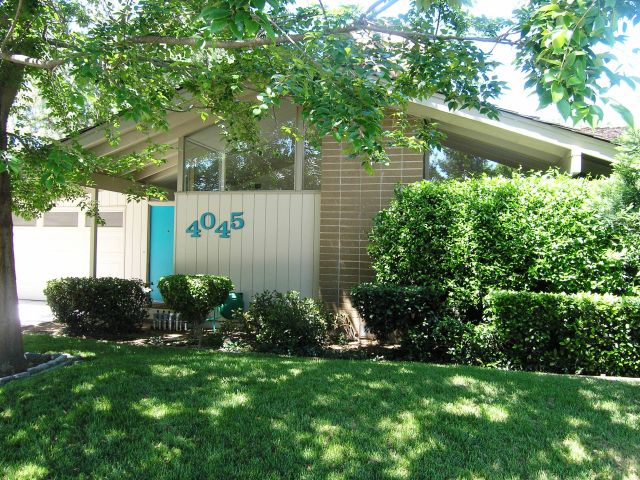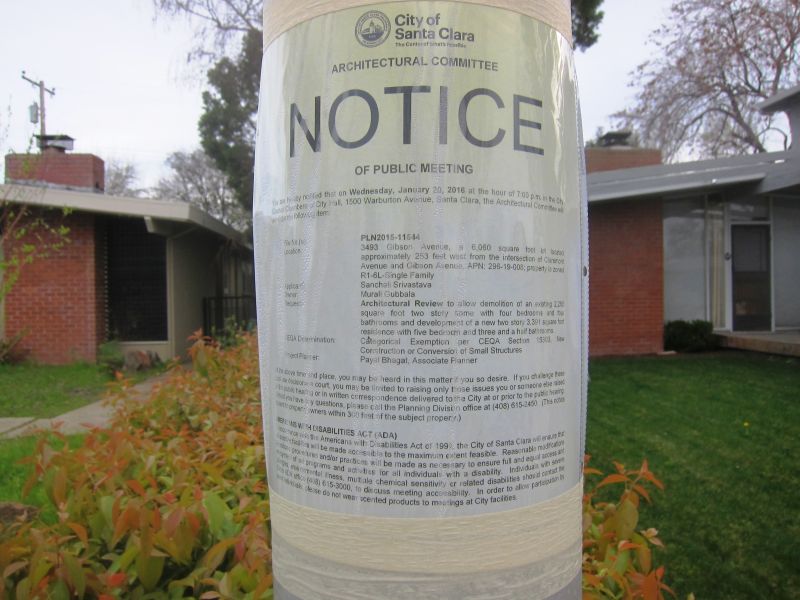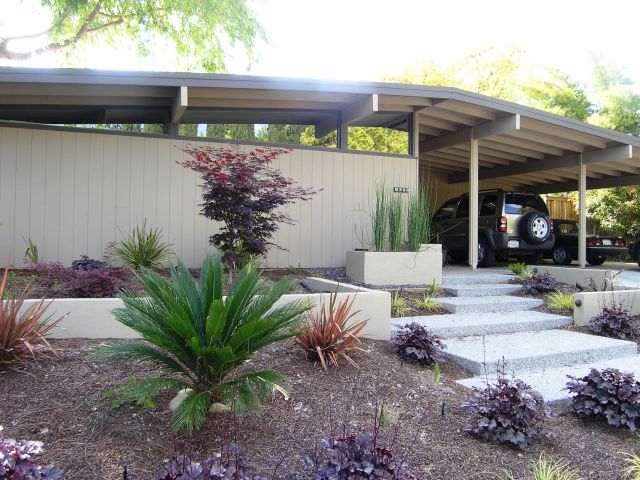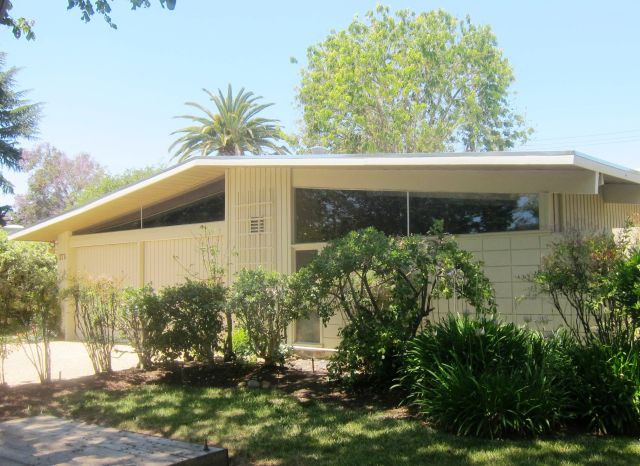
Can CCRs Help Prevent Monster Homes?
 |
|
|
Could a musty old document help people in mid-century modern neighborhoods fend off two-story additions, monster homes, and other such depredations? Some people think so.
In Santa Clara, a handful of residents of the Fairmede tract, developed by John Mackay Homes in the 1950s to designs by Anshen and Allen, are thinking about resurrecting their long-ignored CCRs.
CCRs (covenants, codes, and restrictions) serve as a sort of Constitution for neighborhoods – that have them. They are often created by the developer, handed out to new homeowners along with their title and other important papers at the time of sale, and are enforced by a homeowners association.
Or not enforced.
The idea of using CCRs to preserve a neighborhood has also come up in Palo Alto, if briefly. There, Sheila Himmel, who lives on Richardson Court, where a large home replaced an Eichler, had looked into amending the neighborhood’s CCRs “to require that any remodel be compatible with the Eichler style, so we can avoid really horrendous mismatches,” she said.
 |
|
|
Frank Ingle, also a resident of Richardson Court, noted that the burden of using CCRs would be on individuals. “An owner of a property could bring a civil suit for violating the CCRs,” he said.
In Fairmede, which has been plagued over the years by many unbecoming changes to homes, and in recent months by plans for large new homes, Randy Paul, a member of the Architectural Review Committee, has been checking into how other modern neighborhoods have used CCRs and architectural committees as tools of preservation.
Paul and others have been fighting to stave off a couple of projects in Fairmede. They recently lost on one, when the Planning Commission approved the teardown of one Mackay home (that had already gotten a second-story addition), to be replaced by a much larger home.
The neighborhood wants to learn from others as it seeks to use CCRs.
A quick search by the author of this blog uncovered quite a number of active architectural committees functioning under powers provided them through CCRs.
 |
|
|
In general, it seems, CCRs are used more often, and more effectively, in neighborhoods that share common areas, like parks, community centers, and pools. That’s undoubtedly so because homeowners associations are necessary to oversee these areas.
In neighborhoods without common areas, often there never were homeowner associations to begin with, or CCRs. Or, if there were, the associations may have gone defunct and the CCRs left to molder away in a drawer.
Among Eichler neighborhoods that have active architectural oversight functions thanks to CCRs are Greenmeadow in Palo Alto, and Upper Lucas Valley in Marin County, which might have the most vigorous architectural review committee of any Eichler neighborhood.
Also in Palo Alto, both Charleston Meadows and Green Gables have extant CCRs. Residents of Green Gables do not pull out their CCRs very often, apparently.
But they did pull them out as a tool to stave off what some saw as an inappropriate redevelopment of the adjacent Edgewood shopping center, to mixed effect.
CCRs are also important documents in such Eichler communities as the high-rise Cleary Court in San Francisco where, for example, CCR rules restrict how long owners can rent out their units.
 |
|
|
In Streng neighborhoods in the Sacramento Valley, CCRs are also widely adhered to, including in River City Commons, which strengthened its architectural review functions a decade ago using CCR authority, and Evergreen Commons.
Both these neighborhoods, as suggested by their names, have common areas owned by the community and overseen by homeowner associations.
Over the years, many neighborhoods that once employed CCRs for architectural review have dropped the practice. One typical example is the Streng tract of Shelfied Oaks in Carmichael.
Originally there was an architectural committee. Both Streng Brothers heads Bill and Jim Streng served on it, along with others. “We would sometimes get calls about adding a room or fence, but not many,” Jim Streng has said. (The committee) petered away.”
The experience in River City Commons shows that simply because a neighborhood has CCRs doesn’t mean inappropriate architectural changes can be staved off. Although CCRs gave the homeowners association authority to impose architectural review, the association needed to develop workable architectural guidelines – and then win the approval of 75 percent of homeowners.
 |
|
|
Of course, each neighborhood has different rules and requirements, depending on the wording of their CCRs.
In developing their strengthened guidelines a decade ago, River City Commons based them in part on existing guidelines used by some Eichler neighborhoods.
In 2008, when Evergreen Commons was strengthening its architectural rules, Jim Streng was all for it.
“I think Bill and I were negligent in not making our architectural restrictions stronger,” Jim said at the time. “We thought that if somebody owns a house, they should be able to do what they want if it’s not affecting the next-door neighbors. My opinion has changed since. I think whatever changes they do should fit in with the architecture that is already there.”
In an upcoming post we will visit the Eichler neighborhood of Upper Lucas Valley, which operates probably the most effective architectural review of any Eichler neighborhood, to see how it can be done.
- ‹ previous
- 89 of 677
- next ›



